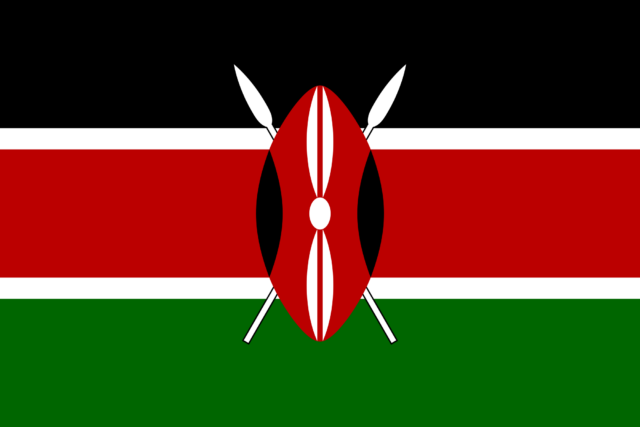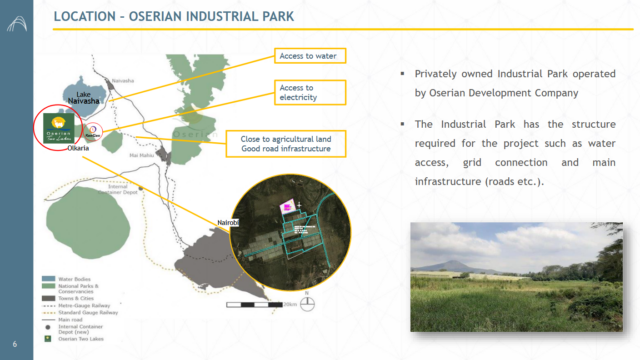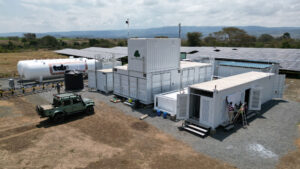Kenya: reducing imports with local, renewable fertilizer production
By Julian Atchison on May 13, 2024
National “Green Hydrogen Guidelines” launched

Click to learn more. Kenya’s Energy and Petroleum Regulatory Authority has released new guidelines for “green” hydrogen and ammonia, including a goal to substitute 50% of current fertilizer imports.
Kenya’s Energy and Petroleum Regulatory Authority has released new guidelines for hydrogen and derivatives in the African country. Via two, five-year phases, Kenya aims to substitute 50% of current, ammonia-based fertilizer imports (between 300,000 – 400,000 tons per year) with locally-produced alternatives, based on the production of electrolytic hydrogen. Fuel for power generation, vehicle transport and potential exports of ammonia are also covered by the guidelines. Projects in Kenya will be fast-tracked for approval and implementation by a new government body: the Green Hydrogen Secretariat, which will operate as part of the Energy and Petroleum Regulatory Authority.
The guidelines require hydrogen to meet a series of sustainability threshold requirements: land use, water use, and grid-connected electricity (at least 80% renewable). The requirements also echo EU standards for hydrogen, including additionality of renewable energy generation and time matching. A host of financial incentives are also available, including tax and VAT exemptions, investment deduction allowances and single licenses for operation. The Kenyan government has established special export and public economic zones where these projects can be developed.
For ammonia, the well-to-gate threshold for carbon intensity will be set at 0.3kg CO2e per kg, averaged over a twelve-month production period. Similar to hydrogen and other derivatives, an annual reporting process to the Kenyan government will be required, including detailed accounting of ammonia produced and offtakers, compliance with the National Environmental Management Authority standards, and production carbon intensity as verified by the Kenya Bureau of Standards. Read the full document here.
The Nairobi Declaration
At the recent Africa Fertilizer and Soil Health Summit, African leaders identified the critical role locally-produced fertilizer will play in the economic development of the continent. Post-event the leaders released a joint statement (The Nairobi Declaration) containing a series of commitments by 2034, including:
- tripling domestic production and distribution of organic and inorganic fertilizers to improve access and affordability for smallholder farmers.
- to at least 70% of smallholder farmers on the continent, making available targeted agronomic recommendations to ensure greater efficiency and sustainable use of fertilizers.
- support efforts of gas-producing African states in fertilizer production.
- implement the Africa Fertilizer Financing Mechanism (AFFM).
- Ministers of Finance to mobilize and allocate adequate resources for the implementation of the recommendations in the Declaration.
It is unfortunate that despite the inherent potential, Africa currently spends billions of dollars in food and fertilizer imports per year. Greater efforts must be made to leverage the availability of raw materials for the local production of mineral fertilizers and reduce our over-reliance on imports.
His Excellency Emmerson Dambudzo Mnangagwa, President of the Republic of Zimbabwe in the African Union’s official press release, 9 May 2024
Huge demand potential

Click to enlarge. Location details of Maire Tecnomont’s renewable ammonia & fertilizer plant in Kenya. From Ralph Koekkoek, Renewable fertilizers for Sub-Saharan Africa (Nov 2022).
Of course, existing players in the ammonia industry have already identified the huge potential on offer in Kenya, and are developing projects there. Maire Tecnimont plans a renewable power–to-fertilizer plant at the Oserian Two Lakes Industrial Park north of the capital Nairobi, producing 550 tons per day of nitrate fertilizers for use by local agri-businesses. The project has direct access to Kenya’s national grid, and will leverage the high penetration of renewable electricity.

Click to learn more. Talus Renewables’ plant in Kenya, producing 1 tonne of fertilizers per day for Kenya Nut Corporation. Source: Talus Renewables/Bloomberg.
And US-based Talus Renewables has already deployed its modular, containerised ammonia & fertilizer production system just outside Nairobi. A 15 year off take agreement has already been signed with Kenya Nut, with the facility producing 1 ton per day of nitrate fertilizer. A scaled-up version of Talus’ technology is already planned, which will completely cover Kenya Nut’s fertilizer requirements.